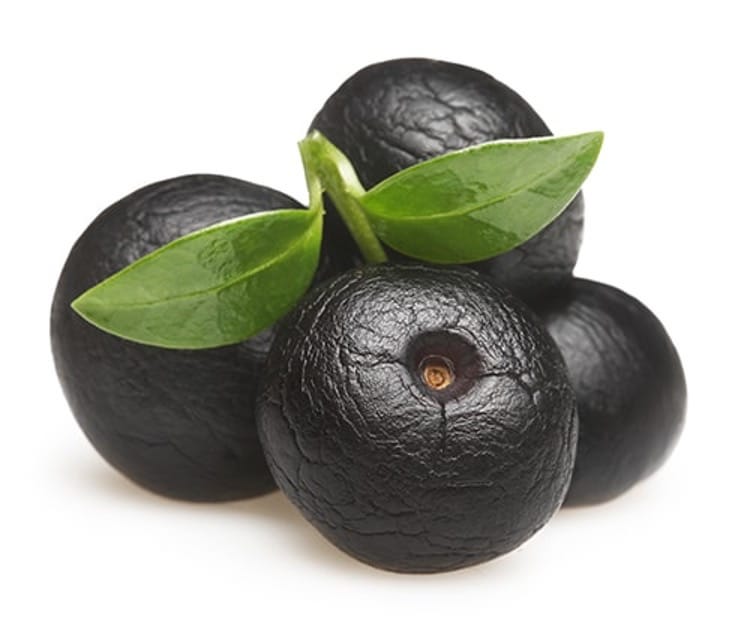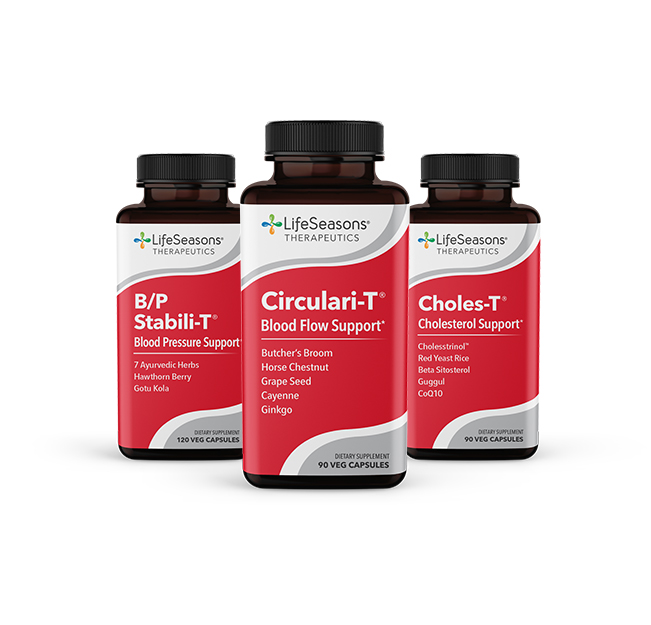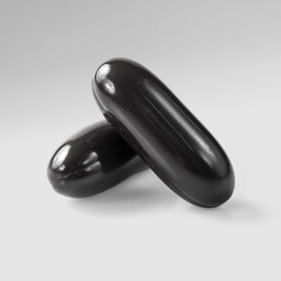BACKGROUND
Ingredient Type: Botanical, Extract
Also Known As: Euterpe oleracea, Açai palm, Cabbage palm, Juçara

The acai berry is a grapelike fruit that is harvested from the acai palm which is native to the tropics of Central and South America. This deep purple fruit has been a longtime staple fruit for the indigenous peoples of the Amazon regions. Also known to the natives as the fruit that cries, some consider the acai fruit as a superfood due to its rich antioxidant and anti-inflammatory polyphenolic compounds, fiber, and other macronutrient dense properties (1).
TRADITIONAL USES
The berry has been used for centuries for immune-stimulating, energizing, and healing properties. Native to Brazil, Peru, Suriname, and Trinidad and Tobago, the berry was considered a staple food of the natives. The importance and value as a staple food are what lead rise to the meaning, the fruit that cries or expels water. The Amazonian folklore says that chief Itaqui ordered newborns to be put to death because of a period of famine experienced by the ancient civilization. When his daughter gave birth to a child, the child was sacrificed. She cried and subsequently died underneath a newly sprouted tree. This tree was what ended the famine and fed the tribe. It was named acai because this was the daughter’s name spelled backward (1).
It wasn’t until the mid-1990s that acai became recognized for its health-related properties and started being utilized for other purposes aside from food such as a constituent in the cosmetic and medicinal/supplemental industries. The popularity has drastically increased demand for the acai fruit worldwide and continues to be one of the most sought-after superfoods today. Brazil continues to supply about 85% of the world through its organic harvesting methods. For acai to be considered organic, deforestation, fertilizer, and insecticides are not to be utilized in the harvesting or processing of acai from the rainforests (2).
From harvesting to wholesale and retail-ready acai, the process starts by climbing the acai tree to retrieve the berries. The berries are then to be soaked, dried, and ground once the fruit layer sloughs off. The core is processed into pulp which contains about 20% of the acai oil. The oil is then sent off for retail and wholesale use. Like preparing wine from grapes, it takes about 70 kg of raw acai to produce 1L of acai oil (2).
Today, with the vast array of foods available, it is difficult to keep track of which foods have beneficial properties. The term superfood was coined to express a food’s broad spectrum of beneficial qualities. The acai berry, considered one of the top superfoods today, touts these noted benefits:
– 10 X’s the antioxidant power of red grapes
– 2 X’s the antioxidant power of blueberries
– 10-30 X’s the anthocyanin of red wine
– Excellent source of fiber, healthy fats and proteins
– Vitamins (Vitamin B2, B3 Beta Carotene, Vitamin C, Vitamin K, Vitamin D, Vitamin E)
– Minerals (Calcium, Potassium, Copper, Manganese, Zinc (9).
WHAT DOES SCIENCE TELL US?
Acai Berry Might have Antioxidative Properties:
In this study, the antioxidant and hypocholesterolemia effects of acai were investigated based on pulp ingestion in rats that were fed a standard or hypercholesterolemic diet. Female Fischer rats were fed a control diet or a hypercholesterolemic diet that contained 25% soy oil and 1% cholesterol. The test diet was supplemented with 2% acai pulp for the control group and the hypocholesterolemic group for six weeks. Levels of protein carbonyl/sulfhydryl groups, superoxide dismutase and paraoxonase activities, and lipid profiles were measured to assess the effects of acai consumption. Following the completion of this study, it was noted that serum levels of carbonyl proteins and total, free, and protein sulfhydryl groups were reduced by acai ingestion in the rats receiving the standard or hypocholesterolemic diet. Acai supplementation induced a significant reduction in superoxide dismutase activity only in the hypercholesterolemic rats. Acai supplementation was also noted to increase paraoxonase activity in both test groups. It was concluded that acai consumption improves antioxidant status while also having a hypocholesterolemic effect in dietary-induced hypercholesterolemia (5).
A recent study was conducted on healthy women to evaluate the effect of consuming acai pulp on the prevention of oxidative damage. The oxidative damage was assessed by measuring the activity of antioxidant enzymes and biomarkers of protein oxidation in the studied participants. In this nutritional interventional study, 35 health women were asked to consume 200 g of acai pulp for four weeks. Blood samples, blood pressure, and anthropometric parameters were measured before and after the experimental, four-week period. The following metrics were assessed in polymorphonuclear cells: antioxidant enzymes, superoxide dismutase, catalase, glutathione, production of reactive oxidative species, total antioxidant capacity as well as protein carbonyl and sulfhydryl groups. According to the results, acai intake increased catalase activity, total antioxidant capacity along with a reduction in the production of reactive oxidative species. A decrease in serum concentration of protein carbonyl was noted, along with an increase in total serum sulfhydryl groups. It was concluded from these results that there was a significant benefit in the consumption of dietary acai for its antioxidant properties (6).
Another study conducted as a four-way crossover clinical trial that investigated acai pulp, clarified acai juice, and applesauce vs. a non-antioxidant beverage as a control, determined the antioxidant qualities of each. Twelve healthy volunteers were dosed at 7 mL/kg following a washout phase and overnight fast. Plasma was sampled repeatedly over 12 hours, while urine was tested over 24 hours following consumption. Plasma antioxidant capacity was significantly increased in the acai pulp (2.3 – 3x) and the applesauce. According to the researchers, results demonstrated the absorption and antioxidant effects of anthocyanins from the acai pulp (13).
Acai Berry Possibly Supports Cognitive Function:
Another study was conducted to assess the antioxidant activity following consumption of the acai pulp and its effects on the cerebral cortex, hippocampus, and the cerebellum of rats treated with the oxidizing agent, hydrogen peroxide (H2O2). Pretreatment of tissue with acai was noted to decrease H2O2 induced damage of both lipids and proteins an all tissues tested. It was assessed that the pulp extract was able to reduce the activities of antioxidant enzymes superoxide dismutase and catalase to basal levels. Considering that oxidative stress is highly implicated in several neurological disorders, considering the results, it was concluded that acai pulp consumption has a positive contribution in preventing the development of age-related neurodegenerative diseases (7).
A research review was conducted on the antioxidant and anti-inflammatory polyphenolic and flavonoid effects of the acai berry fruit, Euterpe oleracea Mart., and Euterpe Precatoria Mart. The acai continues to be studied to determine the neuroprotective properties and whether they are capable of modulating, mitigating, and preventing a range of neurocognitive diseases such as Alzheimer’s, Parkinson’s, and dementia amongst others. Through their assessments and comparative research, it was assessed that the pulp could attenuate the development of atherosclerotic lesions in vivo, which can have a significant impact on brain function and disease development. The continued research supports acai’s ability to support brain health and performance based on its antioxidant and anti-inflammatory qualities. However, further research is warranted to determine the mechanisms and further potential of the pulp’s supportive properties (8).
Acai Berry Possibly Supports Healthy Digestion and Blood Sugar Levels:
A recent study was conducted to evaluate the effect of acai fruit pulp on metabolic disorder risk factors in overweight participants. Metabolic syndrome is a condition defined by specific, associated risk factors for cardiovascular disease and type II diabetes. According to preliminary studies, the activity and presence of reactive oxygen species can assist in the normalization of such metabolic pathways to aid in potentially improving such conditions. In this pilot study, ten overweight adults (BMI > 25 kg/m2) were supplemented with 100 g of acai pulp two times daily for one month. The measured parameters taken at the start of the study as well as the conclusion of the study included in this study were: fasting plasma glucose, insulin, cholesterol, triglycerides and exhaled (breath) nitric oxide metabolites (eNO). Analysis of the results noted significant reductions in the fasting glucose and insulin levels along with total cholesterol. When compared to baseline measures, supplementation with the acai ameliorated the post-prandial increase in plasma glucose following a standardized meal. There, however, was no effect on blood pressure, hs-CRP, or eNO. It was concluded from the results in this pilot study that the consumption of acai pulp significantly reduced selective biomarkers associated with metabolic disease risk in overweight adults (11).
Another clinical pilot trial was conducted to assess the efficacy of acai berry in supporting heart health by reducing associated cardiac risk factors such as cardiovascular disease, stroke, and diabetes. Medicus research recently conducted this study, which assessed ten slightly overweight but healthy adult male and female participants. Each participant studied consumed 100 grams of frozen acai berry pulp two times daily for one month. In this study, participants had a baseline assessment of fasting plasma glucose, plasma insulin levels, total cholesterol, HDL/LDL, triglycerides, c-reactive protein for inflammation, and blood pressure. Upon measurement following the one-month testing period, fasting glucose, insulin, total cholesterol, and LDL cholesterol were significantly reduced when compared to the initial baseline values. Additionally, post-prandial blood glucose level increases were significantly reduced (3).
In this report, reviews were conducted on the novel mechanisms of acai’s efficacy on different targets, which were purported to trigger various health benefits such as antioxidant, vasodilator, antihypertensive, cardio-protector, renal protector, anti-dyslipidemic, anti-obesity and anti-diabetic effects on cardiovascular and metabolic disturbances. Chemical and pharmacological differences between extracts obtained from various components of the plant were considered and assessed (seed, skin, pulp, etc.). Polyphenols, which the acai berry is known for, were noted to increase endothelial nitric oxide production leading to endothelium-dependent relaxation, reduction in reactive oxygen species, and target regulation of certain conditions such as hypertension, renal failure, and metabolic syndrome (4).
Acai Berry Possibly Supports Healthy Cell Growth:
This study analyzed the effects of acai polyphenolics on the antiproliferation and induction of apoptosis in HL-60 human leukemia cells. From the investigation, it was noted that polyphenolic fractions at 0.17-10.7 uM were found to reduce cell proliferation by 56-86%. The researchers attributed this activity to the caspase-3 activation cascade (apoptosis). Due to the limited nature of human studies with this compound, not enough evidence has been gathered to make definitive conclusions of the acai plant’s healing qualities aside from the plant being a source of bioactive polyphenolics. More investigation is necessary to honestly evaluate the potential health benefits of supplementation with phytochemical compounds such as acai berry (12).
SAFETY
With acai berry being considered amongst the top superfoods both nationally and internationally, it is easy to recognize that the fruit contains a high number of vitamins, minerals, and other macronutrients that are noted as beneficial to one’s overall health. There, however, are some considerations that one is recommended to consider before consumption of the acai berry to decrease the possibility of experiencing unwanted reactions or complications.
Allergies – Allergic reactions can occur if one has a pollen allergy or is sensitive to the acai palm itself. It is best advised to be careful when consuming the acai fruit for the first time, especially when one is with an allergy to other fruits or pollens. It is probably best to start with small amounts and gradually increase to a full serving to assess tolerability to the fruit.
Mineral Toxicity – As noted, acai berry is packed with many vitamins, minerals, and macronutrients that are extremely beneficial to our health. It may be possible, however, to consume too much of a specific mineral, especially if other supplements are present in one’s diet. If you are taking any other minerals, vitamins, or prescriptions, please consult your healthcare provider to ensure that your mineral and vitamin values are in balance as side effects may occur if not properly regulated.
Excess Caloric Intake – In 100 grams of frozen acai berry, there are 247 kCals (9). Even considering its nutritional and health benefits, the fruit does contain a significant number of calories along with a fair amount of sugar as most fruits do. It is recommended to properly read all labels of acai supplements, pre-made acai packets, or other forms containing acai berry to assess total caloric intake and sugar composition before consuming. This is especially important for those who are pre-diabetic or diabetic to aid in controlling their sugar blood glucose levels. Although acai berry is best consumed in its natural form, such a form may not always be locally available.
Side-Effects:
In the case of a 52-year old gentleman, he presented to the hospital with a 2-week history of itch, jaundice, lethargy, pale stools, and dark urine. According to his previous health history and labs, he had no risk factors for liver disease. His blood test revealed, however, that he has markedly elevated bilirubin and ALP values along with a slightly elevated AST and ALT. His remaining liver screening was unremarkable. Upon intake, it did come up that this patient was taking a new acai berry supplement drink to promote weight loss. Following a complete analysis of this patient’s case, it was concluded that there was a reaction secondary to the acai berry supplement. According to this clinical study, it was found that the supplement contained high levels of D-aspartate, an amino acid involved in a pituitary pathway that is involved in the stimulation of testosterone production. Beta-sitosterol is also noted to be found in the berries and is considered a precursor of boldenone, which is an anabolic steroid. Alongside anabolic steroids, androgenic steroids have also been shown to be involved in the development of cholestatic jaundice (10).
Although this study could be a stretch in placing blame on the acai berry fruit itself as the culprit of this gentleman’s cholestatic jaundice, one must also remember to put into consideration what other components are being consumed when acai is not taken in its pure nature-derived form; for example, acai berry supplements for weight loss. This example is just a reminder to be cognizant of what the current status of your health is and what you are consuming dietarily and supplementally.
REFERENCES
- Acai – What is it and Where Does it Come From? https://www.ibtimes.com/acai-what-it-where-does-it-come-183593. Accessed 4 June 2019.
- Schauss AG, Wu X, Prior RL, Ou B, Patel D, Huang D, Kababick JP. Phytochemical and nutrient composition of the freeze-dried Amazonian palmberry, Euterpe oleraceae Mart. (acai). J Agric Food Chem. 2006;54(22):8598-603.
- Udani JK, Singh BB, Singh VJ, Barrett ML. Effects of Acai (Euterpe oleracea Mart.) Berry Preparation on Metabolic Parameters in a Healthy Overweight Population: A Pilot Study. Nutrition Journal. 2011;10: 45.
- De Moura RS, Resende AC. Cardiovascular and Metabolic Effects of Acai, an Amazon Plant. J Cardiovasc Pharmacol. 2016;68(1):19-26. DOI: 10.1097/fjc.0000000000000347.
- De Souza MO, Silva M, Silva ME, Oliveira RDE P, Pedrosa ML. Diet Supplementation with Acai (Euterpe Oleracea Mart.) Pulp Improves Biomarkers of Oxidative Stress and the Serum Lipid Profile in Rats. Nutrition. 2010;26(7-8):804-10.
- Barbosa PO, Pala DP, Teixeira Silva CB, et al. Acai (Euterpe oleracea Mart.) Pulp Dietary Intake Improves Cellular Antioxidant Enzymes and Biomarkers of Serum in Healthy Women. Nutrition. 2016;32(6):674-680.
- Spada PDS, Dani C, Bortolini GV, Funchal C, Henriques JAP, Salvador M. Frozen Fruit Pulp of Euterpe oleraceae Mar. (Acai) Prevents Hydrogen Peroxide-Induced Damage in the Cerebral Cortex, Cerebellum, and Hippocampus of Rats. Journal of Medicinal Food. 2009;12(5): 1084-1088.
- Schauss AG. Chapter 19 – The Effect of Acai (Euterpe spp.) Fruit Pulp on Brain Health and Performance. Bioactive Nutraceuticals and Dietary Supplements in Neurological and Brain Disease. 2015:179-186.
- Acai Berry – The Amazon’s Super Food. World of Acai. https://www.doc-developpement-durable.org/file/Arbres-Fruitiers/FICHES_ARBRES/açai/AllAboutAcai.pdf. Accessed 24 June 2019.
- Stratton L, McNeilly J, O’Neill C, Cash WJ. Acai Berry Induced Cholestatic Jaundice. Journal of Medical Cases. 2014;5(6):373-375.
- Udani JK, Singh BB, Singh VJ, Barrett ML. Effects of Acai (Euterpe oleracea Mart.) Berry Preparation on Metabolic Parameters in a Healthy Overweight Population: A Pilot Study. Nutrition Journal. 2011;10(45).
- Mertens-Talcott SU, Rios J, Jilma-Stohlawetz P, Pacheco-Palencia LA, et al. Pharmacokinetics of anthocyanins and Antioxidant Effects After the Consumption of Anthocyanin-Rich Acai Juice and Pulp (Euterpe oleracea Mart.) in Human Healthy Volunteers. J Agric Food Chem. 2008;56: 7796-7802.
- Del Pozo-Insfran D, Percival SS, Talcott ST. Acai (Euterpe oleracea Mart.) Polyphenolics in Their Glycoside and Aglycon Forms Induce Apoptosis of HL-60 Leukemia Cells. J Agric Food Chem. 2006;54: 1222-1229.









